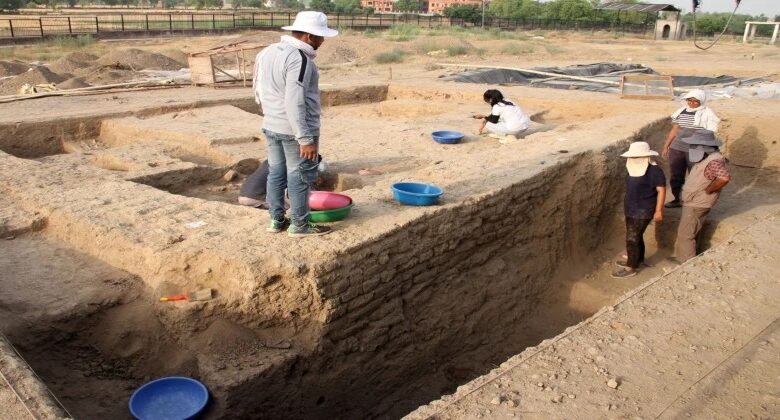Unravelling the Ancient Mysteries of Braj: ASI’s Excavation of Bahaj Village

News Mania Desk / Agnibeena Ghosh/13th May 2024
The Archaeological Survey of India (ASI) has embarked on an ambitious mission to delve into the historical tapestry of the Braj region, the revered birthplace of the Hindu deity Krishna. With a focus on Govardhan Hill, part of the Braj landscape encompassing Mathura, Vrindavan, and other significant sites mentioned in Hindu mythology, ASI’s excavation marks a significant step in unravelling the ancient secrets of this sacred land.
Led by Vinay Kumar Gupta, the Superintending Archaeologist of ASI’s Jaipur circle, the excavation at Bahaj village in the Deeg district of Rajasthan aims to shed light on the rich cultural heritage of Mathura, a pivotal but relatively understudied region. Nestled at the base of Govardhan Hill, Bahaj village holds immense historical significance, intertwined with the legends of Krishna’s divine deeds.
Gupta emphasizes the cultural importance of Braj, stating, “The worship system and sculpture art of all our [Hindu] gods and goddesses developed from this region and spread to the rest of India.” Despite its cultural significance, Braj has remained relatively untouched by archaeological endeavors, making this excavation a crucial endeavor to unearth the secrets of ancient times.
The initiative aligns with the Narendra Modi government’s agenda to explore India’s ancient roots and uncover evidence of legendary narratives like the Mahabharata period. ASI’s focus on excavations across India reflects a broader effort to deepen the understanding of India’s civilizational history and unearth physical sites that validate revered historical accounts.
The excavation at Bahaj village offers a unique opportunity to explore the ancient culture of Mathura, a region shrouded in mystery. Unlike other abandoned sites, Bahaj is a thriving village, providing insights into the continuous inhabitation and cultural evolution of the area.
Since the commencement of excavation in January, Gupta’s team has unearthed a treasure trove of artifacts spanning various historical periods. Discoveries include bone tools from the Shunga Period, clay seals depicting deities, terracotta artifacts from the Mauryan phase, and burnt bricks suggesting structures from the Mauryan Period.
The excavation has also yielded significant finds such as miniature pots filled with natural sand, likely used in ritualistic activities, and small beads indicative of local craftsmanship. These discoveries offer invaluable insights into ancient practices and cultural traditions prevalent in the region.
Gupta’s team comprises enthusiastic archaeologists and students, braving the scorching heat to uncover the secrets buried beneath Bahaj village. Despite initial challenges, including the curiosity of villagers, the team perseveres in their quest for knowledge.
The significance of Bahaj village extends beyond its archaeological importance. Situated in the vicinity of Govardhan Hill and part of the revered 84 Kos Parikrama circuit, the area holds spiritual significance for Hindus. Its exploration not only enriches our understanding of history but also strengthens the cultural fabric of the region.
As the excavation progresses, Gupta remains hopeful of unravelling the earliest cultures of Mathura, potentially dating back to the Bronze Age. With each discovery, the excavation brings us closer to discovering the mysteries of Braj, illuminating the rich tapestry of India’s ancient past.






